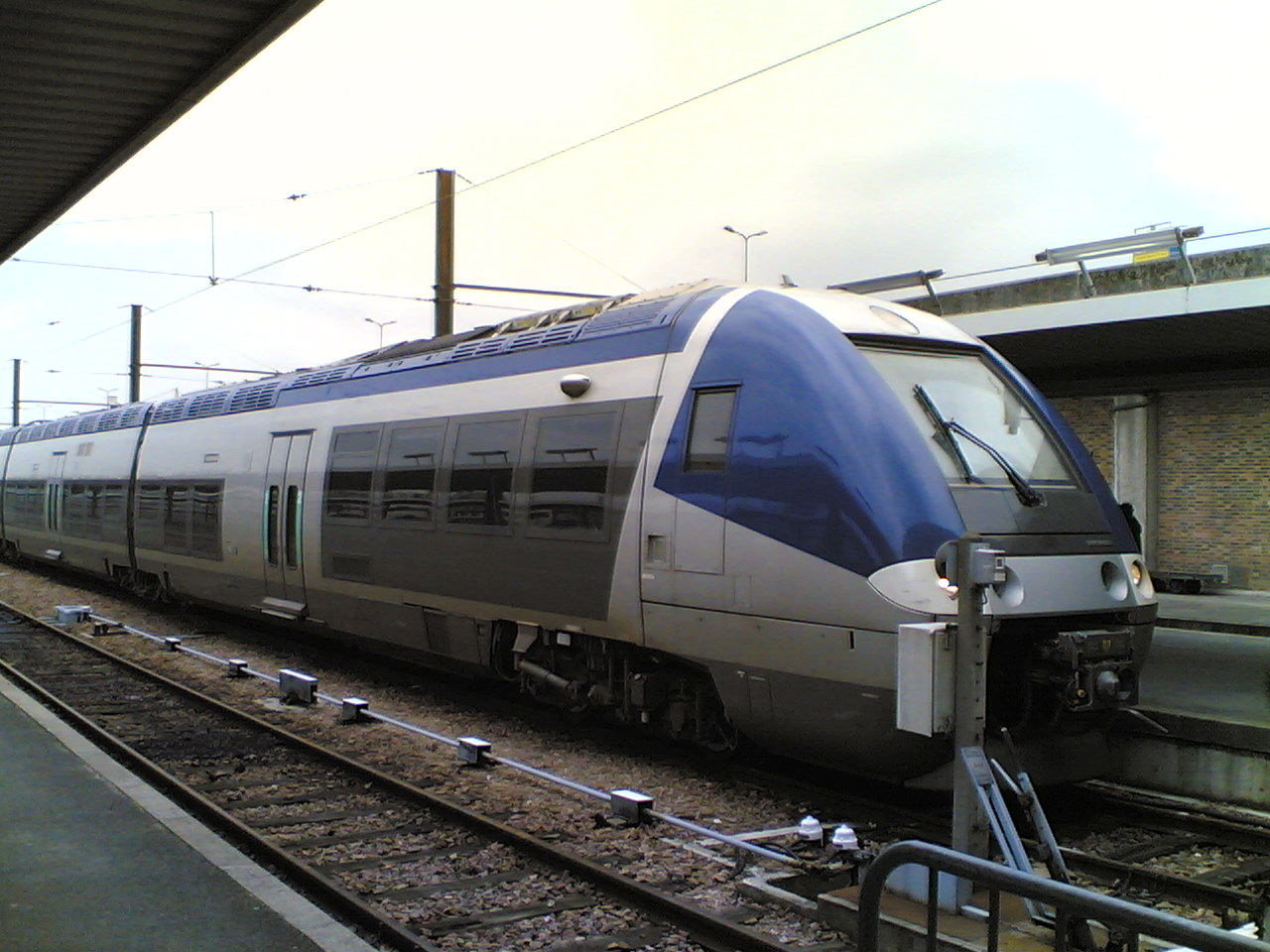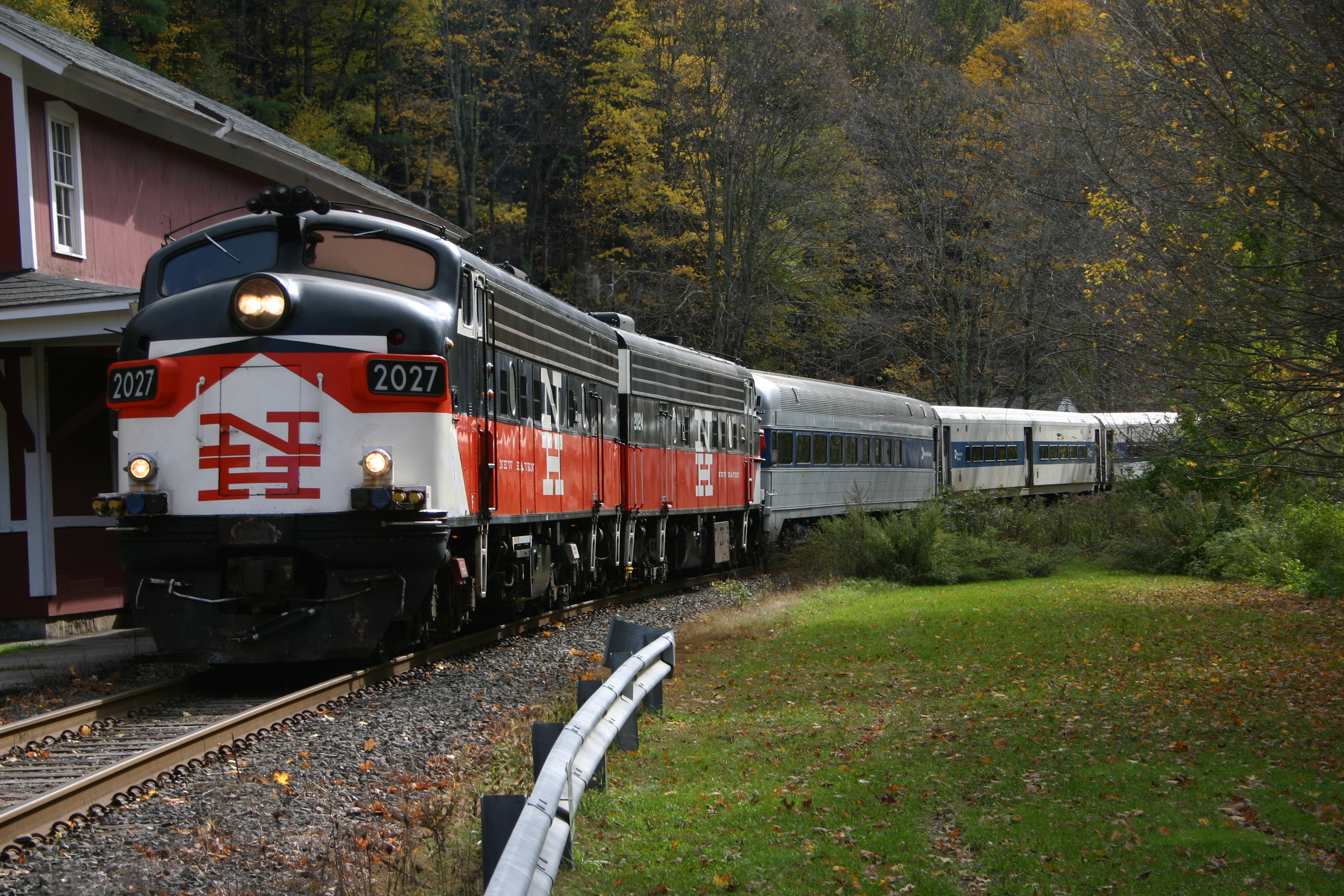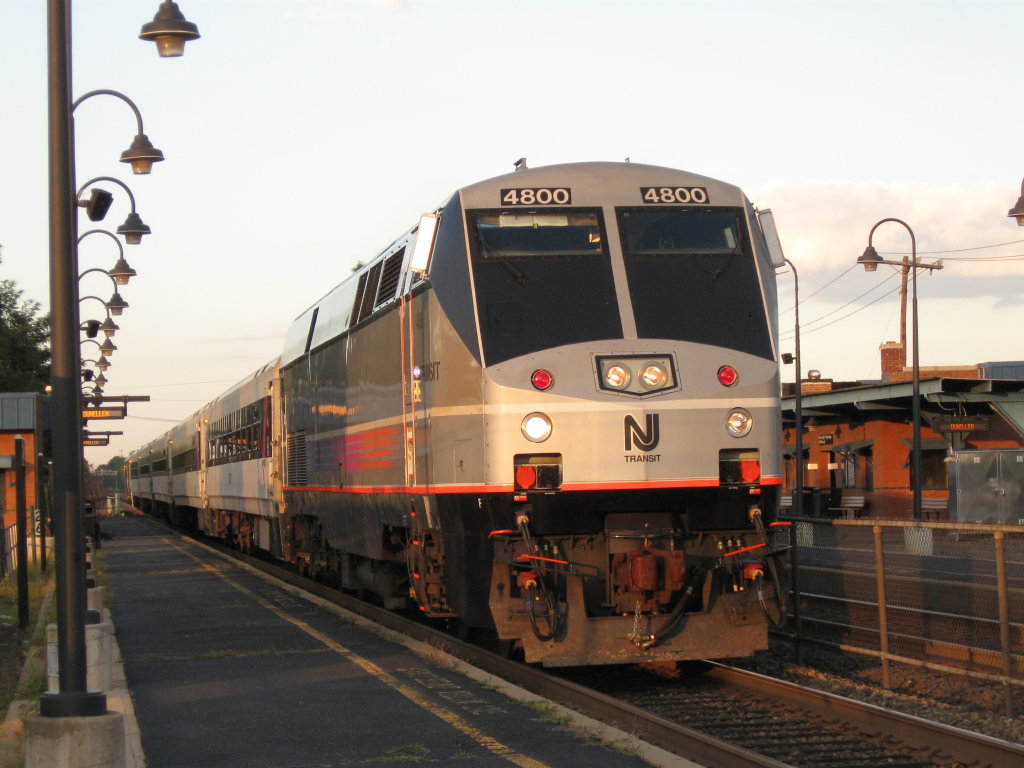|
Electro-diesel
An electro-diesel locomotive (also referred to as a dual-mode or bi-mode locomotive) is a type of locomotive that can be powered either from an electricity supply (like an electric locomotive) or by using the onboard diesel engine (like a diesel-electric locomotive). For the most part, these locomotives are built to serve regional, niche markets with a very specific purpose. Overview Electro-diesel locomotives are used to provide continuous journeys along routes that are only partly electrified without a change of locomotive, avoid extensive running of ''diesel under the wires'' (using a diesel locomotive where electrified lines are available), and giving solution where diesel engines are banned. They may be designed or adapted mainly for electric use, mainly for diesel use or to work well as either electric or diesel. Note that, as well as the electric multiple unit (EMU) and diesel multiple unit (DMU), where no discrete locomotive is present, an electro-diesel (bi-mode) ... [...More Info...] [...Related Items...] OR: [Wikipedia] [Google] [Baidu] |
ALP-45DP
The Bombardier ALP-45DP is a type of single cab dual-mode locomotive built by Bombardier Transportation (later Alstom) and operated by New Jersey Transit and Exo. Operators New Jersey Transit New Jersey Transit (NJT) purchased 26 ALP-45DPs in 2008, with an option to purchase up to 63 additional units. The first locomotive from the order was displayed at Innotrans in 2010 and was officially unveiled at Pennsylvania Station on May 11, 2011. NJT purchased 9 additional units in July 2010. The locomotives from these two orders are numbered 4500–4534. The ALP-45DPs are used on the Morristown Line, Montclair-Boonton Line, Raritan Valley Line, Northeast Corridor Line, and the North Jersey Coast Line, providing a one-seat ride into New York Penn Station. They are also used on the Main Line, Bergen County Line, Pascack Valley Line, and occasionally on Metro-North Railroad's Port Jervis Line. They have replaced all GP40FH-2 locomotives (except those owned by Metro-North), and a ... [...More Info...] [...Related Items...] OR: [Wikipedia] [Google] [Baidu] |
British Rail Class 73
The British Rail Class 73 is a British electro-diesel locomotive. The type is unusual in that it can operate from the Southern Region's 650/750 V DC third-rail or an on-board diesel engine to allow it to operate on non-electrified routes. This makes it very versatile, although the diesel engine produces less power than is available from the third-rail supply so the locomotives are rarely operated outside of the former Southern Region of British Rail. Following the withdrawal and scrapping of the more powerful Class 74 electro-diesels in 1977, the Class 73 was unique on the British railway network until the introduction of the Class 88 electro-diesels in 2017. Ten locomotives have been scrapped. History The Southern Railway's expanding third rail electric passenger network (which had begun as far back as 1915) was until 1941 a purely passenger electric multiple unit (EMU) system. This was because it was necessary to have gaps in the third rail for level crossings, etc., w ... [...More Info...] [...Related Items...] OR: [Wikipedia] [Google] [Baidu] |
British Rail Class 88
The British Rail Class 88 is a type of mainline mixed traffic electro-diesel locomotive manufactured by Stadler Rail for Direct Rail Services (DRS) in the United Kingdom. The locomotive is part of the Stadler Euro Dual family. It is the first dual-mode locomotive in the UK to use the 25 kV AC electrification. Amid the fulfillment of DRS' order for the Class 68, Stadler's team proposed the development of a dual-mode locomotive that could be alternatively powered by an onboard diesel engine or via electricity supplied from overhead lines (OHLE). Having been impressed by the concept, DRS opted to place an order for ten Class 88s during September 2013. Having been developed alongside the , considerable similarities are shared between the two locomotives, amounting to roughly 70 percent of all components being shared. Testing of the first Class 88 was undertaken at the Velim Test Centre in the Czech Republic during 2016; these trials proved to be relatively smooth. Durin ... [...More Info...] [...Related Items...] OR: [Wikipedia] [Google] [Baidu] |
Electro-diesel Multiple Unit
An electro-diesel multiple unit (EDMU) or bi-mode multiple unit (BMU) is a form of a multiple unit that can be powered either by electric power picked up from the overhead lines or third rail (like an electric multiple unit – EMU) or by using an onboard diesel engine, driving an electric generator, which produces AC or DC electric power (like a diesel-electric multiple unit – DEMU). List of BMUs Asia China Two variants of the China Railway CR200J-SG Fuxing (HXD1D-J and FXN3-J) high-speed train are electro-diesel (bi-mode) multiple units specifically designed for plateau operation. They are HXD1D-J manufactured by CRRC Zhuzhou Locomotive and FXN3-J manufactured by CRRC Dalian. Two variants are served on Sichuan–Tibet railway. Oceania Australia NSW TrainLink Regional Train Project is building 117 bi-mode carriages (1.5kV DC) to replace its diesel fleet of interstate and regional XPT, Xplorer and Endeavour trainsets to be delivered by CAF from 2023. Europe ... [...More Info...] [...Related Items...] OR: [Wikipedia] [Google] [Baidu] |
British Rail Class 74
The British Rail Class 74 was an electro-diesel locomotive that operated on the Southern Region of British Railways, rebuilt from redundant Class 71 locomotives in the late 1960s. An electro-diesel locomotive is one that can operate either from an electrical supply, such as overhead catenary or (in this case) an energised third rail, or from an onboard diesel engine. All were withdrawn between June 1976 and December 1977, and scrapped between 1977 and 1981. History Twenty-four British Rail Class 71 (pre-TOPS type HA) were built in 1958 at the British Rail works in Doncaster and in 1964 ten were deemed surplus to requirements, withdrawn from service and placed in storage. The Southern Region was highly impressed with the "little-ED" JA & JB/class 73 locomotives and were keen to see a higher power locomotive with the same flexibility. In 1965, discussions were opened with English Electric (builders of the production JB/Class 73) to produce a high powered electro-diesel. Orig ... [...More Info...] [...Related Items...] OR: [Wikipedia] [Google] [Baidu] |
Diesel Multiple Unit
A diesel multiple unit or DMU is a multiple-unit train powered by on-board diesel engines. A DMU requires no separate locomotive, as the engines are incorporated into one or more of the carriages. Diesel-powered single-unit railcars are also generally classed as DMUs. Diesel-powered units may be further classified by their transmission type: diesel–mechanical DMMU, diesel–hydraulic DHMU, or diesel–electric DEMU. Design The diesel engine may be located above the frame in an engine bay or under the floor. Driving controls can be at both ends, on one end, or in a separate car. Types by transmission DMUs are usually classified by the method of transmitting motive power to their wheels. Diesel–mechanical In a diesel–mechanical multiple unit (DMMU), the rotating energy of the engine is transmitted via a gearbox and driveshaft directly to the wheels of the train, like a car. The transmissions can be shifted manually by the driver, as in the great majority of first-gen ... [...More Info...] [...Related Items...] OR: [Wikipedia] [Google] [Baidu] |
EMD FL9
The EMD FL9 (New Haven Class EDER-5) is a model of electro-diesel locomotive, capable of operating either as a traditional diesel-electric locomotive or as an electric locomotive powered from a third rail. Sixty units were built between October 1956 and November 1960 by General Motors Electro-Motive Division for the New York, New Haven and Hartford Railroad (the "New Haven"). Design Due to concerns about diesel emissions in the East River Tunnels and the underground tracks of Grand Central Terminal and Penn Station, passenger trains entering New York City have long been required to use electrical power, as diesel exhaust would pose a hazard to human health in the confined underground spaces. At the same time, much of the New Haven's trackage was not electrified beyond New Haven. To allow passenger trains to travel to New York City from non-electrified lines without requiring a change of locomotives, the New Haven Railroad purchased a class of locomotive that could switch between d ... [...More Info...] [...Related Items...] OR: [Wikipedia] [Google] [Baidu] |
GE Genesis
General Electric Genesis (officially trademarked GENESIS) is a series of passenger diesel locomotives produced by GE Transportation, then a subsidiary of General Electric. Between 1992 and 2001, a total of 321 units were built for Amtrak, Metro-North, and Via Rail. The Genesis series of locomotives was designed by General Electric in response to a specification published by Amtrak and ultimately selected over a competing design presented by Electro-Motive Diesel (EMD). Until the introduction of the Siemens Charger, the Genesis series had the lowest height of any North American diesel-electric locomotives, being lower than the previous-generation F40PH. This low height allows the locomotive to travel easily through low-profile tunnels in the Northeast Corridor. Technical design The GE Genesis series is unique among recently manufactured North American passenger locomotives in that it uses a single, monocoque carbody design styled by industrial designer Cesar Vergara, thus ... [...More Info...] [...Related Items...] OR: [Wikipedia] [Google] [Baidu] |
P32AC-DM
General Electric Genesis (officially trademarked GENESIS) is a series of passenger diesel locomotives produced by GE Transportation, then a subsidiary of General Electric. Between 1992 and 2001, a total of 321 units were built for Amtrak, Metro-North, and Via Rail. The Genesis series of locomotives was designed by General Electric in response to a specification published by Amtrak and ultimately selected over a competing design presented by Electro-Motive Diesel (EMD). Until the introduction of the Siemens Charger, the Genesis series had the lowest height of any North American diesel-electric locomotives, being lower than the previous-generation F40PH. This low height allows the locomotive to travel easily through low-profile tunnels in the Northeast Corridor. Technical design The GE Genesis series is unique among recently manufactured North American passenger locomotives in that it uses a single, monocoque carbody design styled by industrial designer Cesar Vergara, thus m ... [...More Info...] [...Related Items...] OR: [Wikipedia] [Google] [Baidu] |
Locomotive
A locomotive or engine is a rail transport vehicle that provides the Power (physics), motive power for a train. If a locomotive is capable of carrying a payload, it is usually rather referred to as a multiple unit, Motor coach (rail), motor coach, railcar or power car; the use of these self-propelled vehicles is increasingly common for passenger trains, but rare for freight (see CargoSprinter). Traditionally, locomotives pulled trains from the front. However, Push-pull train, push-pull operation has become common, where the train may have a locomotive (or locomotives) at the front, at the rear, or at each end. Most recently railroads have begun adopting DPU or distributed power. The front may have one or two locomotives followed by a mid-train locomotive that is controlled remotely from the lead unit. __TOC__ Etymology The word ''locomotive'' originates from the Latin language, Latin 'from a place', Ablative case, ablative of 'place', and the Medieval Latin 'causing mot ... [...More Info...] [...Related Items...] OR: [Wikipedia] [Google] [Baidu] |
Third Rail
A third rail, also known as a live rail, electric rail or conductor rail, is a method of providing electric power to a railway locomotive or train, through a semi-continuous rigid conductor placed alongside or between the rails of a railway track. It is used typically in a mass transit or rapid transit system, which has alignments in its own corridors, fully or almost fully segregated from the outside environment. Third rail systems are usually supplied from direct current electricity. Modern tram systems, street-running, avoid the risk of electrocution by the exposed electric rail by implementing a segmented ground-level power supply, where each segment is electrified only while covered by a vehicle which is using its power. The third-rail system of electrification is not related to the third rail used in dual gauge railways. Description Third-rail systems are a means of providing electric traction power to trains using an additional rail (called a "conductor rail") fo ... [...More Info...] [...Related Items...] OR: [Wikipedia] [Google] [Baidu] |
Diesel Locomotive
A diesel locomotive is a type of railway locomotive in which the prime mover is a diesel engine. Several types of diesel locomotives have been developed, differing mainly in the means by which mechanical power is conveyed to the driving wheels. Early internal combustion locomotives and railcars used kerosene and gasoline as their fuel. Rudolf Diesel patented his first compression-ignition engine in 1898, and steady improvements to the design of diesel engines reduced their physical size and improved their power-to-weight ratios to a point where one could be mounted in a locomotive. Internal combustion engines only operate efficiently within a limited power band, and while low power gasoline engines could be coupled to mechanical transmissions, the more powerful diesel engines required the development of new forms of transmission. This is because clutches would need to be very large at these power levels and would not fit in a standard -wide locomotive frame, or wear too quic ... [...More Info...] [...Related Items...] OR: [Wikipedia] [Google] [Baidu] |



.jpg)







.jpg)